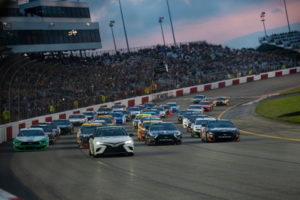 In the UK, the majority of people who are asked about racing cars will inevitably talk about Formula 1, but in the United States of America nothing comes close to the world of NASCAR racing.
In the UK, the majority of people who are asked about racing cars will inevitably talk about Formula 1, but in the United States of America nothing comes close to the world of NASCAR racing.
NASCAR, incidentally, isn’t a type of car but rather an acronym for the National Association for Stock Car Auto Racing. The main words in there are ‘stock car’, given that that stock cars are the type of vehicle used for the races that usually take place on oval tracks.
The National Association for Stock Car Auto Racing is actually a company that operates and sanctions the races, with 3 main series taking place during the year. There are a host of smaller series that occur throughout the regions of the US, with NASCAR sanctioning more than 1500 races over the course of the season.
Founded by Bill France Senior in 1948, NASCAR as a company is based in the Daytona Beach area of Florida but the races are broadcast to more than 150 countries.
Best Bookmaker For NASCAR Betting
William Hill

William Hill have made quite a name for themselves as the go to place to bet on pretty much anything around the world. For NASCAR they are one of the only sites guaranteed to cover all of the major outright and live markets for the motor sport.
They also provide long in advance ante-post outright lines and even the occasional offer in the run up to the big races.
This bookie also has several all sport promotions that can add further value to any wagers.
How To Bet On NASCAR
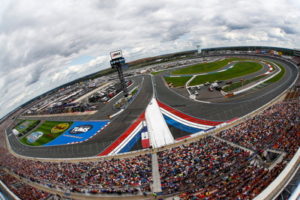 When it comes to having a flutter on NASCAR races the first thing you’ll want to consider is the Outright betting market. As with other sports, this is a bet on the overall winner of a race or series.
When it comes to having a flutter on NASCAR races the first thing you’ll want to consider is the Outright betting market. As with other sports, this is a bet on the overall winner of a race or series.
You can often find other markets within the world of NASCAR that you might want to consider, such as a bet on a driver being within the top 3 at the race’s conclusion.
Match-Up betting is an interesting market to explore if you’re more used to betting on head-to-head events like football or tennis. This type of bet asks the driver that you’ve chosen to finish higher in the listings than another driver when the race has reached its finish.
Prop bets take a lot at another side of the market, offering more interesting bets than the norm. Here you can bet on things such as which manufacturer will make the care that wins the race, with the difference between this and an outright bet being that most car manufacturers will have several vehicles in the race, thereby giving you an increased chance of success.
The History Of NASCAR
Roots In The Prohibition Era
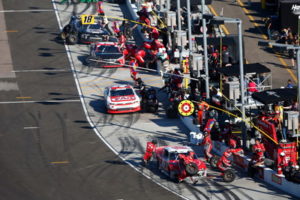 NASCAR traces its history back to the prohibition era in America. Back then alcohol was banned, so smugglers would bring moonshine into the country illegally and they’d need to be able to outrun the authorities who would attempt to stop them.
NASCAR traces its history back to the prohibition era in America. Back then alcohol was banned, so smugglers would bring moonshine into the country illegally and they’d need to be able to outrun the authorities who would attempt to stop them.
In order to carry this off they need to improve their vehicles to make them faster and more powerful than those used by the police. The problem was, of course, that if they looked as though they had been altered then the authorities could look out for them as they were driving around. For that reason, the souped up cars needed to look like any other vehicle on the road.
After a time, the moonshine runners began to speak to each other and make runs at the same time, often challenging each other to races when they were on their journeys. As the years passed these challenges began to become more organised and taking place on different tracks around the country.
At the same time as this was happening Daytona Beach in Florida was becoming a venue for people trying to set the land speed record, seeing 8 world records in a row being set between 1927 and 1935. That, combined with the fact that the location had been the venue for a famous race between Alexander Winton and Ransom Olds in 1903, meant that Daytona Beach was quickly becoming the place to go for fast car drivers.
Prohibition Ends & NASCAR Gets Formalised
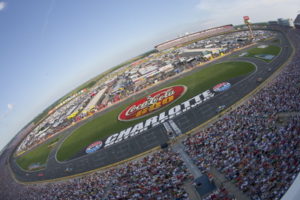 Perhaps part of the reason for the increase in the popularity of NASCAR in its more formative years was the end of the prohibition era in 1933. It resulted in the bootleggers moving to the South of America, where the locals had enjoyed the moonshine and wanted to keep drinking it.
Perhaps part of the reason for the increase in the popularity of NASCAR in its more formative years was the end of the prohibition era in 1933. It resulted in the bootleggers moving to the South of America, where the locals had enjoyed the moonshine and wanted to keep drinking it.
This time the drivers needed to avoid the revenuers that were hoping to tax them on the goods that they were selling, meaning that the need to keep improving the cars continued. Meanwhile a mechanic named William France Senior moved to Daytona Beach in 1935 in the hopes of escaping the ravages of the Great Depression. He entered into the land speed record event that took place in 1936 and then took over the running of the venue 2 years later.
Racing at Daytona Beach generally dried up during the Second World War, but in the wake of it France realised that stock car racing could be a popular spectator sport if done properly. He was also aware that racing would struggle to win an audience if it wasn’t properly sanction and regulated, with set rules and a championship that people could understand.
Towards the end of 1947 he began to have conversations with other drivers and racing promoters to that end, with most of them happy to listen to him because they were used to having to deal with unscrupulous promoters who would often disappear with the money raised from the sale of tickets before the drivers ever got paid.
The National Championship Stock Car Circuit
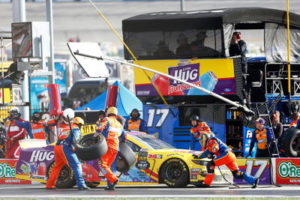 Before France met with those other promoters and drivers he’d put his money where his mouth was with the creation of the National Championship Stock Car Circuit. He’d asked the American Automobile Association for for sponsorship but they had declined, so instead he created a set of rules and announced that the winner at the end of the season would be rewarded with $1,000.
Before France met with those other promoters and drivers he’d put his money where his mouth was with the creation of the National Championship Stock Car Circuit. He’d asked the American Automobile Association for for sponsorship but they had declined, so instead he created a set of rules and announced that the winner at the end of the season would be rewarded with $1,000.
The first race of the series took place at the Daytona Beach track at the start of the year and there were close to 40 events over the season, culminating with a December race in Jacksonville.
At the end of the racing a driver named Fonty Flock was declared the winner and was duly presented with his cheque for $1,000 as well as a 4-foot high trophy. Other drivers were also paid around £3,000 in prize money, meaning that France had gained their trust compared to those other, less honest promoters who had put on races in the past.
In the middle of December 1947 France began a series of meetings with representatives of the NSCC, presenting them with his vision of the future of organised racing. On the 21st of February 1948 he confirmed that a new body for stock car racing had been formed: NASCAR.
NASCAR Gets Underway
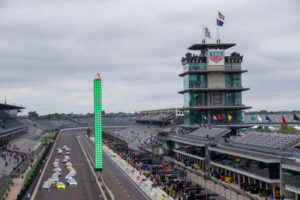 The early plans for NASCAR saw 3 divisions being raced, which were Modified Cars, Roadsters and Strictly Stock Cars. It was felt by those involved that the least popular would be the stock car racing, but as it happened the exact opposite was true; roadsters were perceived as being something for fans form the Northeast and Midwest.
The early plans for NASCAR saw 3 divisions being raced, which were Modified Cars, Roadsters and Strictly Stock Cars. It was felt by those involved that the least popular would be the stock car racing, but as it happened the exact opposite was true; roadsters were perceived as being something for fans form the Northeast and Midwest.
The Strictly Stock section of racing had to be abandoned as post-war car manufacturers struggled to produce family-sized sedans quickly enough to keep up with demand. Indeed, the Strictly Stock division wasn’t even able to debut until February of 1949 when a 20-mile exhibition took place in Miami.
The first official Strictly Stock race that was part of the NASCAR surface took place at Charlotte Speedway in June 1949, with Glenn Dunaway winning but then being disqualified for altering the springs to his rear tires and Jim Roper taking the title instead.
Originally the title of ‘Strictly Stock’ was adhered to fairly stringently and the cars that were used had almost no modifications to them. Gradually that started to change in order to allow safety alterations and that lead to more and more changes to the cars in the years that followed. By the middle of the 1960s the cars being used were purpose-built and only the body was what would be described as ‘stock’.
NASCAR’s Move Out Of The States
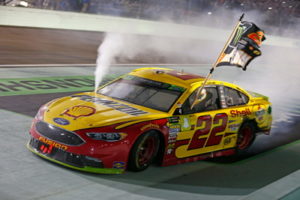 NASCAR has long been thought of as a peculiarly American sport, featuring in films such as Days Of Thunder with Tom Cruise and Nicole Kidman that demonstrated a slice of Americana. Yet racing fans in the rest of the world have long been fascinated by it and in 2006 the car manufacturer Toyota joined the ranks of car makers whose vehicles were used in NASCAR races.
NASCAR has long been thought of as a peculiarly American sport, featuring in films such as Days Of Thunder with Tom Cruise and Nicole Kidman that demonstrated a slice of Americana. Yet racing fans in the rest of the world have long been fascinated by it and in 2006 the car manufacturer Toyota joined the ranks of car makers whose vehicles were used in NASCAR races.
In 2007 NASCAR saw one of its races occur at Circuit Gilles Villeneuve in Canada, continuing there until 2012.
With NASCAR’s share of the television market dropping by around 21% between 2005 and 2007 many believe that further expansion into foreign markets will help it increase its appeal.
With foreign-born drivers such as Patrick Carpentier, Juan Pablo Montoya, and Dario Franchitti making a name for themselves as NASCAR racers after previously having been involved in the likes Indy racing and Formula 1, NASCAR has been able to appeal to an audience outside of the United States and expand its market in a real way.
Rules & How NASCAR Works
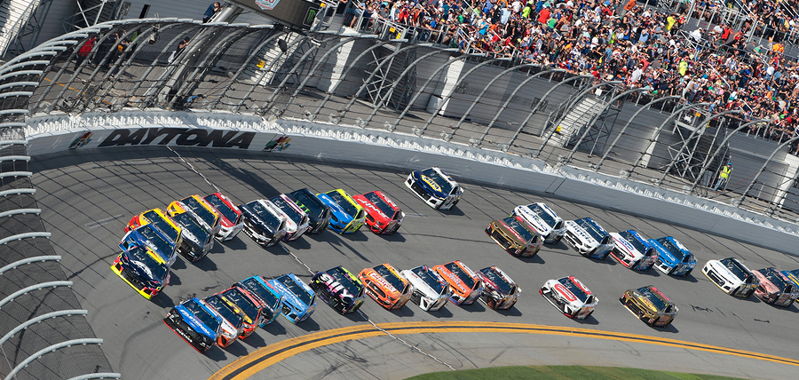
NASCAR is a motor sport and as such the obvious main thing to realise is that drivers try to finish the races quicker than others in their cars in order to earn points that get put towards the championship.
Things aren’t quite that simple, however, thanks to the fact that the different series’ operate in different ways from each other and there are stages, playoffs and even overtime.
Individual Races
Every race in all three of NASCAR’s major series gets broken up into segments that they call stages. The first two stages tend to be about a quarter of the race’s overall length and the final stage is around half of it.
The exception to that is the race at Charlotte Motor Speedway, which has 4 stages. There are too many races to look at the stages for each and every one of them, but the following will give you an idea of what we’re talking about:
- Daytona: Stage 1 – 60 Laps, Stage 2 – 60 Laps, Stage 3 – 80 Laps
- Las Vegas: Stage 1 – 80 Laps, Stage 2 – 80 Laps, Stage 3 – 107 Laps
- Charlotte: Stage 1 100 Laps, Stage 2 – 100 Laps, Stage 3 – 100 Laps, Stage 4 – 100 Laps
Points
Points are awarded to the best 10 drivers at the end of each stage, with every driver getting points of some description at the end of the race in its entirety. The race’s winner automatically qualifies for the playoff.
Points matter all the way up to the final race of the series as they help to decide which drivers qualify for the playoff, but in the final race it’s just a matter of the driver finishing first winning.
Seasons
Looking at the main NASCAR Cup Series, it has 26 races during the regular season and then 10 in the playoffs, which used to be referred to as the Chase. 16 drivers qualify for the playoffs.
The best driver at the end of the playoffs wins the championship.
Restrictions
As with Formula 1, there are regular changes to the rules to restrict certain things such as how much an engine can be used and how many crew members can be in the pit and so on.
The Major NASCAR Competitions
Now that we know about the history of NASCAR racing and how it works as a sport it’s worth having a quick look at the most popular of the sport’s series.
Monster Energy NASCAR Cup Series
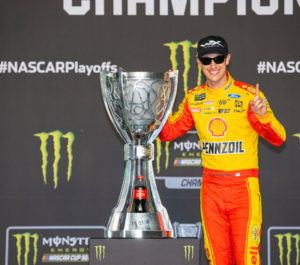 The highest level of professional NASCAR racing is the Monster Energy NASCAR Cup Series, which had its inaugural season in 1949. That is what started life as the Strictly Stock event and then later was renamed as the Grand National. In 1971 sponsorship of the series was taken over by the R. J. Reynolds Tobacco Company and their brand of Winston cigarettes, taking on the moniker of the Winston Cup Series. That sponsorship deal ended in 2003 and the series has boasted a number of sponsorships since.
The highest level of professional NASCAR racing is the Monster Energy NASCAR Cup Series, which had its inaugural season in 1949. That is what started life as the Strictly Stock event and then later was renamed as the Grand National. In 1971 sponsorship of the series was taken over by the R. J. Reynolds Tobacco Company and their brand of Winston cigarettes, taking on the moniker of the Winston Cup Series. That sponsorship deal ended in 2003 and the series has boasted a number of sponsorships since.
From 2001 onwards the series has seen 36 races take place over a period of 10 months. The points system used for the series at its outset had been written on a bar napkin in 1947 and was adhered to until 2011 when NASCAR announced major changes to the way the rules of the competition would work. Race winners receive 43 points and each position thereafter receives 1 point less, with bonus points also being available. With. 10 races of the series left points are resent and only the top 16 drivers are eligible to win the championship.
NASCAR Xfinity Series
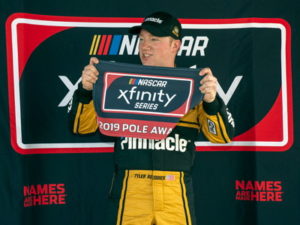 The second level of NASCAR racing is known as the Xfinity Series, which took place for the first time in 1982.
The second level of NASCAR racing is known as the Xfinity Series, which took place for the first time in 1982.
It is essentially something of a minor league in the sport, giving drivers the chance to earn their stripes before moving up to the NASCAR Cup Series. It has boasted numerous different titles over the years because of sponsorship, being sponsored by the Comcast owned internet brand Xfinity at the time of writing.
The Xfinity Series hasn’t always been structured in the same way as its older brother, but in 2016 it was decided that a Chase For The Championship similar to that used in the NASCAR Cup Series would be added. The top-level of NASCAR has a 4-round format to its Chase, but the Xfinity Series’ Chase is based over 3-rounds and the bottom 4 drivers after each round are eliminated to leave just 4 drivers with a chance of winning the championship in the final race.
Gander Outdoors Truck Series
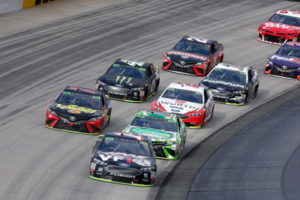 The final big series in NASCAR is the Gander Outdoors Truck Series, which is specifically for pickup trucks that have been modified to become racing vehicles. It was announced in 1994 and the first series took place the following year.
The final big series in NASCAR is the Gander Outdoors Truck Series, which is specifically for pickup trucks that have been modified to become racing vehicles. It was announced in 1994 and the first series took place the following year.
In its more formative years it was seen as being something of a chance for the old-timers of NASCAR, but as it developed it became more and more popular and nowadays drivers can go from here to the NASCAR Cup Series without needing to race a full campaign in the Xfinity Series.
The Truck Series followed in the footsteps of the Xfinity Series by introducing a Chase format in 2016, also keeping with the same method of being based over 3-rounds and eliminating the 4 drivers with the fewest points to leave just 4 that can win the championship at the end of the final race. In 2017 it was decided to abandon the ‘Chase’ label and instead follow most other American sports in referring to this at the Playoffs.
This is by no means a definitive list, with countless regional series available to watch and bet on throughout the course of the season. They are, however, the main competitions that you’ll want to look at.
